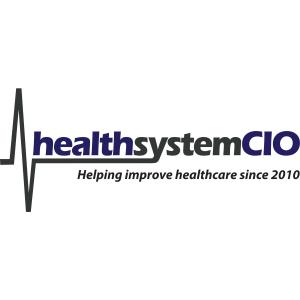healthsystemCIO.com

Podcast Interview with CIO JD Whitlock, Part 2: "We Have to Be Smart."
If you aren’t willing to say ‘no’ once in a while, perhaps the CIO role – especially at a relatively small pediatric organization – isn’t for you. Because the reality is that it’s going to happen more than once in a while, and so being able to make tough decisions is a requirement. There are, however, advantages when you’re a David in a sea of Goliaths. For one thing, “you get used to McGyver-ing things at a smaller facility,” said JD Whitlock, CIO at Dayton Children’s. “It’s nice to have those tools in your tool box.” Another benefit is being able to move quickly, he noted in a recent interview, during which Whitlock discussed his team’s strategy in adopting an enterprise imaging architecture, how Dayton is collaborating with pediatric organizations through an innovation incubator, and why he believes it’s “irresponsible” for leaders to focus 100 percent on Covid. LISTEN HERE USING THE PLAYER BELOW OR SUBSCRIBE THROUGH YOUR FAVORITE PODCASTING SERVICE. Key Takeaways * Participating in an innovation “incubator” with other pediatric hospitals enables organizations like Dayton Children’s to “collaborate intelligently without having to stand up a whole separate accelerator.” * The worst mistake organizations can make when using solutions like MyChart? Failing to turn on all the functionality. “You’re screwing up digital health if you’re going out and buying a bunch of bolt-ons.” * Smaller organizations have to “make hard choices about what to do and what not to do,” and part of that includes engaging individuals with good ideas and steering them in the right direction. * At this point, leaders can’t still be 100 percent focused on Covid; the focus should be on operationalizing in a new reality, while dealing with budget constraints. Q&A with JD Whitlock, Part 2 (Click here to view Part 1) Gamble: I’m going to guess that you don’t have a huge innovation center, but are there different ways or different channels that people can go through if they have an idea? Whitlock: Two things there. We do have an academic affiliation — the Boonshoft School of Medicine — which is also in Dayton, Ohio. We have a number of research shops going on in the facility and the residency program, and we have a very mature quality improvement culture. We have a year-long quality improvement class in which clinicians and managers across the organization are invited to participate, and every year we have a crop of really good quality improvement projects that come out of it. Those are the types of things we can move quickly on. Another thing I’m excited about is KidsX, which is the first pediatric digital health accelerator program. It’s run out of Children’s Hospital Los Angeles, and has several member children’s hospitals from across the country and a lot of incubators. Health systems come together and do a Shark Tank-type of thing where we vote on the most promising innovation and then pilot some of the best opportunities we see. It enables us to collaborate intelligently without having to stand up a whole separate accelerator by ourselves, which would not really be feasible for us. Gamble: Very interesting. In terms of pediatric digital health, what are some of the trends you’re seeing? Whitlock: The number one thing is, you have to actually turn on all the functionality in MyChart. You’re screwing up digital health if you’re going out and buying a bunch of bolt-ons. If you do that,






 Visit Podcast Website
Visit Podcast Website RSS Podcast Feed
RSS Podcast Feed Subscribe
Subscribe
 Add to MyCast
Add to MyCast